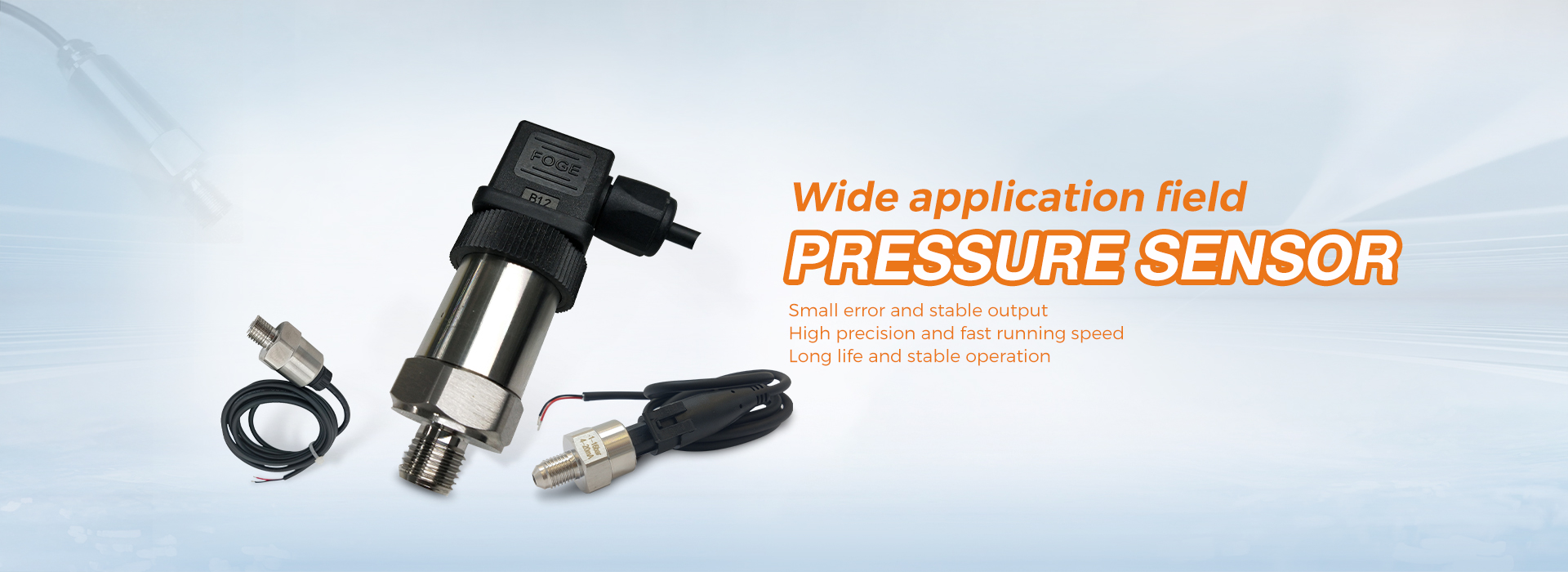In recent years, my country’s sensor technology is developing rapidly, and its application fields are also expanding. As the most mature type of modern measurement technology, new technologies, new materials and new processes are constantly emerging in the field of pressure sensors.
A pressure sensor is a device used to detect pressure signals and convert them into electrical signals according to certain rules. It is widely used in various production, industrial and aerospace fields.With the subdivision of application fields, pressure measurement in high-temperature and harsh environments such as high-temperature oil wells and various engine cavities is becoming more and more important, while the materials used in ordinary pressure sensors exceed a certain temperature (for example, the working temperature of diffused silicon pressure sensors is lower than 120 °C). °C) will fail, resulting in pressure measurement failure. Therefore, the high temperature pressure sensor becomes a very important research direction.
Classification of high temperature pressure sensors
According to the different materials used, high-temperature pressure sensors can be divided into polysilicon (Poly-Si) high-temperature pressure sensors, SiC high-temperature pressure sensors, SOI (silicon on insulator) high-temperature pressure sensors, SOS (silicon on sapphire) silicon-sapphire pressure sensors, optical fiber High temperature pressure sensor and other different types.Judging from the current development situation, the research status and prospects of SOI high-temperature pressure sensors are very ideal. The following mainly introduces the SOI high temperature pressure sensor.
SOI high temperature pressure sensor
The development of SOI high-temperature pressure sensors mainly relies on the rise of SOI materials.SOI is silicon on insulator, which mainly refers to the semiconductor material formed between the Si substrate layer and the Si top layer device layer with SiO2 as the insulating layer.The special structure of SOI enables insulation between the device layer and the substrate layer, eliminates the common gate latch effect in bulk silicon, and improves the reliability of the device.In addition, due to the high-temperature characteristics of the SOI device layer, it becomes an ideal material for preparing high-temperature pressure sensors.
At present, SOI high-temperature pressure sensors have been successfully developed abroad, and the working temperature is -55~480°C;The -55~500°C SOI high-temperature pressure sensor developed by the Goodrich Advanced Sensor Technology Center in the United States; the SOI high-temperature pressure sensor developed by the French LETI Institute also has a working temperature of more than 400°C.Domestic research institutions are also actively carrying out research on SOI high-temperature pressure sensors, such as Xi’an Jiaotong University, Tianjin University, and Peking University. In addition, the FATRI Future Advanced Technology Research Institute of FATRI is also carrying out related research work, and the current project has entered the demonstration stage.
Working principle of SOI high temperature pressure sensor
In principle, the SOI high temperature pressure sensor mainly utilizes the piezoresistive effect of single crystal silicon.When a force acts on the silicon crystal, the lattice of the crystal is deformed, which in turn leads to a change in the mobility of the carriers, resulting in a change in the resistivity of the silicon crystal.Four piezoresistors are etched in a specific direction on the SOI top device layer to form a Wheatstone bridge as shown in Figure 2(a); a pressure back cavity is etched on the SOI substrate layer to form a pressure sensitive structure.
Figure 2(a) Wheatstone bridge
When the pressure-sensitive structure is subjected to air pressure, the resistance of the piezoresistor changes, which in turn causes the output voltage Vout to change, and the pressure value is measured through the relationship between the output voltage value and the resistance value of the piezoresistor.
Fabrication process of SOI high temperature pressure sensor
The preparation process of SOI high-temperature pressure sensor involves multiple MEMS processes. Some key steps are briefly introduced here to understand the process of the sensor, mainly including piezoresistor preparation, metal lead preparation, pressure-sensitive film preparation, and pressure chamber packaging.
The key to the preparation of varistors lies in the control of the doping concentration and the optimization of the subsequent etching molding process; the metal lead layer mainly serves as the connection of the Wheatstone bridge; the preparation of the pressure sensitive film mainly relies on the deep silicon etching process; The packaging of the cavity usually varies depending on the application of the pressure sensor,
Since the current commercialized high-temperature pressure sensors cannot well meet the pressure measurement requirements of special harsh environments such as high-temperature oil wells and aero-engines, future research on high-temperature pressure sensors has become inevitable.Due to its special structure and high-temperature characteristics, SOI materials have become ideal materials for high-temperature pressure sensors. Future research on SOI high-temperature pressure sensors should focus on solving the long-term stability and self-heating problems of sensors in high-temperature harsh environments and improving the accuracy of pressure sensors. aspect.
Of course, the advent of the intelligent era also requires SOI high-temperature pressure sensors combined with other multidisciplinary technologies to bring more intelligent functions such as self-compensation, self-calibration, and information storage to the sensor, so as to better complete the mission of sensing complex high-temperature environmental pressure. .
Post time: Feb-13-2023




